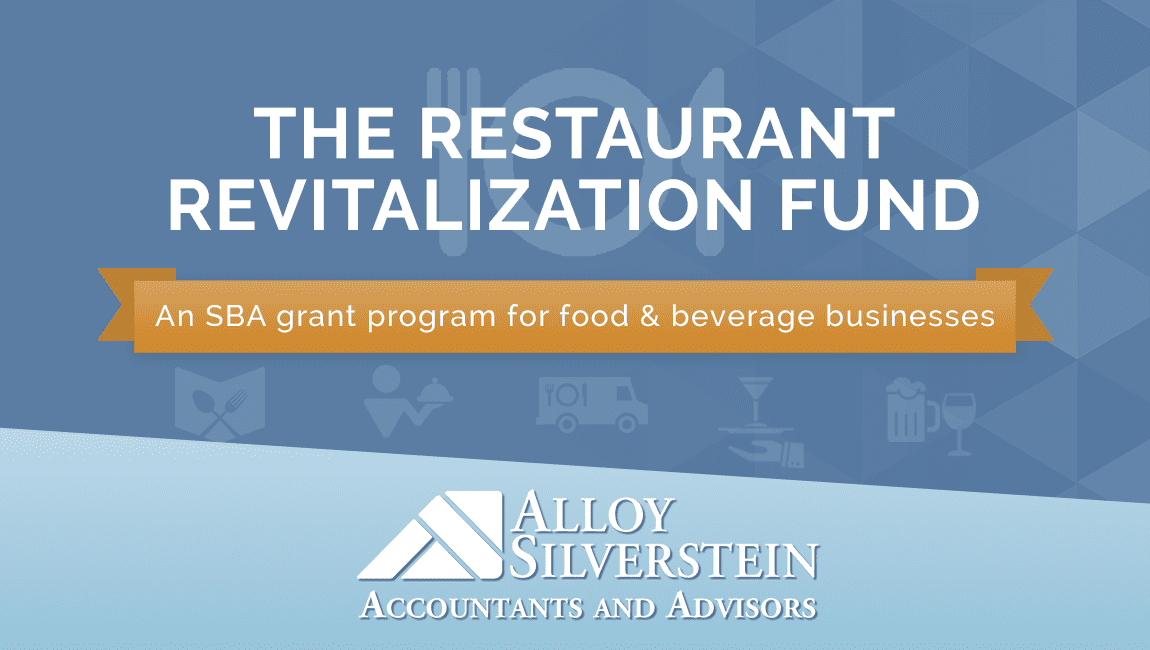
The passage of the American Rescue Plan Act of 2021 set aside nearly $30 billion in funds to create the Restaurant Revitalization Fund (RRF). Since the food and beverage industry has been devastated by this past year from the COVID-19 pandemic, these grants aim to bring much needed funds and relief to the restaurants and bars still in operation or those new in business. See our below recap on the RRF requirements and calculations.
Update as of April 29, 2021: The SBA has released updated eligibility guidelines and information on the application process, which begins on Friday, April 30. Click here to read our latest update →
$23.6 billion has been made available for the SBA to award loans capped at $10 million to food and beverage industry business owners. An additional $5 billion is set aside for smaller businesses with gross receipts of $500,000 or less.
The grants are limited to $5 million per physical location. The RRF grants are not subject to income taxes and federal tax deductions are protected (as of March 25, 2021).
To be eligible, the applicant must own or operate 20 or fewer establishments and certify economic necessity. This time around, publicly-traded companies and restaurants are ineligible for this SBA relief.
If all grant funds are not spent by the business, or the business permanently closes before March 11, 2023, unused funds must be returned to the Treasury. (Updated April 29, 2021)
If you have already applied for and received PPP funds, that amount is subtracted from gross receipts to arrive at your loan amount. See below for the full calculation. However, you cannot apply for PPP after you receive a RRF grant.
One of the main points of eligibility is that you cannot receive both an RRF grant and a Shuttered Venue Operator Grant (SVOG). The SVOG is $1.25 billion in grants for live event venues, theaters, performing arts, museums, zoos, aquariums, talent representatives, and more entities that meet specific eligibility requirements.
Your best course of action is to consult with your CPA or business advisor to know all available relief programs and which is the best for your individual situation.
Eligible businesses that can apply for The Restaurant Revitalization Fund include a place of business where patrons assemble for the primary purpose of being served food or drink. This covers:
The grant can be used on covered expenses incurred between February 15, 2020 and March 11, 2023. The list of eligible expenses are as follows:
Accurate and organized recordkeeping of your restaurant’s expenses during the applicable time period is very important.

For a restaurant that was open prior to the pandemic and remained open throughout, the grant can be calculated as:
* What if there is no 2019 base to compare? The calculation slightly varies for restaurants that opened for business in 2020 or 2021.
NOTE: As of March 31, 2021, the next steps for the Restaurant Revitalization Fund have been updated and applicants do not need to obtain D-U-N-S and SAM numbers. More information will be provided shortly. The application window is expected to open early April.
UPDATE: Restaurant owners who seek to participate in the Restaurant Revitalization Fund will not need to sign up for a https://t.co/tkh0Wl5KB8 account or be required to have a DUNS number. More info to come. Stay updated on all pandemic relief programs at https://t.co/6HxXvlxpli
— SBA (@SBAgov) March 30, 2021
While the SBA has not yet released the application or the date applications can start being accepted, there are two steps you can do ahead of time to expedite your application process.

You will need a D-U-N-S number from https://dnb.com to move forward in the process. This unique number may take up to two days to receive.

You also have to register at https://sam.gov for your RRF application, however, you need your D-U-N-S number in order to complete this step. Note that this may take up to two weeks to fully process.
Do not wait for those above registrations or you could be behind by two weeks once the application window opens.
The SBA will prioritize awarding grants for small businesses owned and controlled by women, veterans, or socially and economically disadvantaged small businesses for the first three weeks of the program.
Make sure you are in constant communication with your CPA. They should know the ins and outs of your business and the complexities of these SBA relief program options.
Contact an Alloy Silverstein CPA if you need further guidance in obtaining relief for your small business. We are here to help!
Empowering business owners and individuals in South Jersey and Philadelphia to feel confident through proactive accounting and advisory solutions.